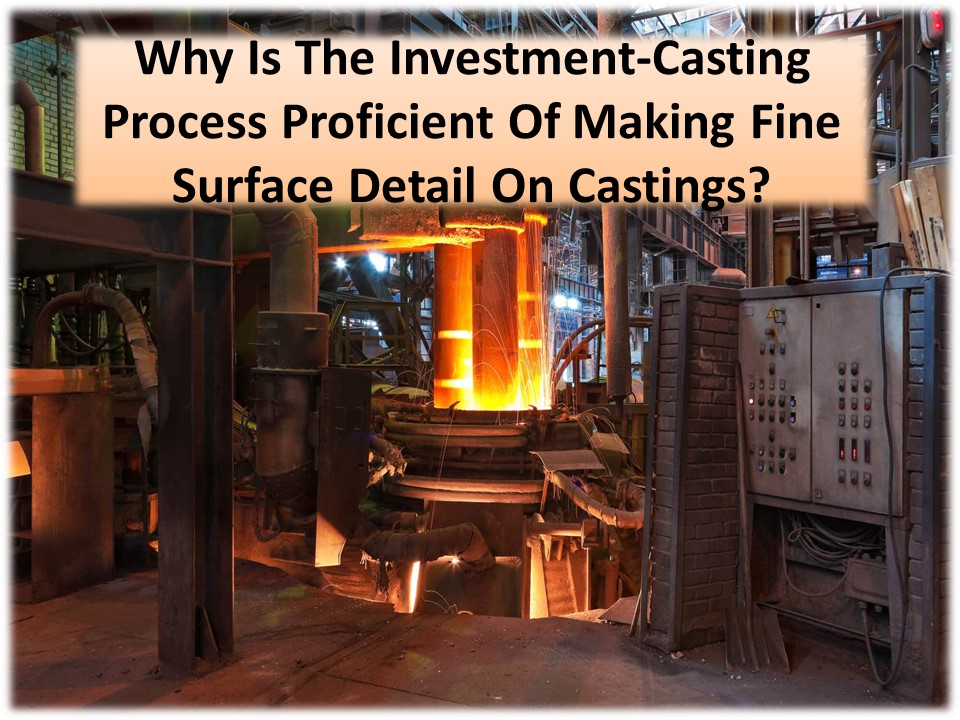6 Secrets to Making Fine Surface with Investment-Casting - PowerPoint PPT Presentation
Title:
6 Secrets to Making Fine Surface with Investment-Casting
Description:
Also, possible for these process features to make castings with a net shape or a near-net build. The process of investment casting includes many intermediate phases etc. – PowerPoint PPT presentation
Number of Views:0
Title: 6 Secrets to Making Fine Surface with Investment-Casting
1
Why Is The Investment-Casting Process Proficient
Of Making Fine Surface Detail On Castings?
2
- Investment casting is an old-fashioned technique
that has been used for the production of delicate
and accurate metal components for thousands of
years. Castings guarantee that superior parts are
created with the primary features of precision,
reproducibility, adaptability, and integrity.
Beeswax was used to build the pattern, and
today's high-technology waxy substances,
refractory substances, and specialty alloys were
also used. - Investment casting foundries method is
appropriate for the fabrication of net shape
components from a variety of metals and
high-performance alloys in a manner that achieves
repeatability. Despite the fact that this method
is often used for the production of tiny
castings, it has been utilized to manufacture
full airplane door frames, with steel castings
weighing up to 300 kilograms and aluminum
castings weighing up to 30 kilograms.
3
- It is also possible for these process features to
produce castings with a net shape or a near-net
shape. The majority of the metals that are
commonly used arealuminum, bronze, magnesium,
carbon steel, and stainless steel alike. Turbine
blades, medical equipment, handgun components,
gears, jewels, golf club heads, and a wide
variety of other machine components with
complicated geometry are some examples of the
types of parts that may be created using
investment casting. - The process of investment casting includes a
number of intermediate phases, including the
building of a metal die, the manufacturing of a
wax pattern, the development of a ceramic mold,
pouring, solidification, shakeout, and cleaning.
4
- 1. Metal die construction
- During the process of investment casting, both
the wax pattern and the ceramic mold are
destroyed hence, a fresh wax pattern is required
for each separate casting. A mold or die is
required in order to generate wax patterns,
unless investment casting is being utilized to
produce a very tiny volume In this case, the wax
patterns may be manufactured from the mold or
die. - A detailed calculation has to be done in order to
determine the size of the master die. This
calculation needs to take into account the
predicted shrinkage of the wax pattern, the
expected shrinkage of the ceramic material that
is invested over the wax pattern. - 2. Wax pattern production
- It is always the case that the number of wax
patterns is equal to the number of castings that
are to be created one fresh wax pattern is
required for each individual casting. - Injections of hot wax are made into the mold or
die, and then the wax is allowed to set. For the
formation of any internal characteristics, cores
could be required. The wax pattern formed as a
consequence is an exact reproduction of the
component that is going to be manufactured. The
technique is similar to die-casting, except
instead of using molten metal, wax is used in the
process.
5
- 3. Mold creation
- One of the components of the wax mold is a
system, which includes risers, runner bars, and
sprues. The formation of a tree-like assembly is
achieved by attaching many wax designs to a
central wax gating system in order to create
smaller castings. The process of pouring molten
metal into the mold is achieved with the use of a
pouring cup, which is normally connected to the
end of the runner bars. - 4. Pouring
- The ceramic mold is heated at temperatures
ranging from 550 to 1100 degrees Celsius (1000 to
2000 degrees Fahrenheit). Because of the heating
process, the mold is strengthened even more, any
wax or pollutants that may have been left behind
are removed, and water is evaporated from the
mold material. - While the mold is still hot, liquid metal is
poured into the pouring cup, then via the central
gating system, and finally into each mold cavity
on the tree. This process is repeated until the
mold is completely filled with liquid metal.
6
- 5. The process of cooling
- Following the pouring of the metal into the mold,
the metal will cool and become solid. Because of
the material that was cast and the thickness of
the casting that is being formed, the amount of
time it takes for a mold to cool down and become
solid is dependent on both of these factors. - 6. Shakeout
- When the casting has reached the desired
consistency, the ceramic molds will disintegrate,
allowing the casting to be removed. In most
cases, the ceramic mold is broken apart manually
or with the assistance of water jets. After being
removed, the individual castings are separated
from their respective gating system by the use of
sawing, cutting, burning, or cold shattering
using nitrogen gas.
7
(No Transcript)































